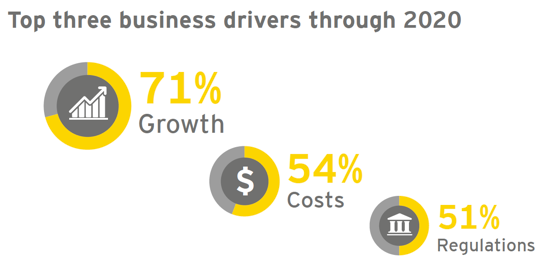
© V ALEX/ISTOCK/THINKSTOCK
In late 2014, EY asked CFOs and senior finance executives from 35 global insurers about their most pressing challenges and their plans for driving improvements through critical initiatives.
Striking the balance between the strategic and operational or tactical areas of transformation requires holistic thinking and potentially large-scale adjustments to many parts of the organization. Experience teaches us that the best first step is to set out a clear vision and strategy for finance, and define a blueprint to prioritize planning and implementation projects. Such blueprints should include a quantifiable business case that clearly articulates why undertaking broad-based change is worth the effort.
Further, it should define a target operating model for the future. Such a model should incorporate:
- Process delivery models highlighting centralization and location strategies from which to perform critical processes (such as reporting and transaction processing), as well as links to current and future technology needs
- Organizational models defining clear roles, responsibilities and ownership along process lines, and in terms of business partnering relationships
- A global performance measurement framework
- A high-level design of the target finance systems architecture and tools that support the overall strategy of the organization
- A well-defined strategy for data and Chart of Accounts
- Required skillsets in line with the target operating model, and succession plans for key finance resources
- An Analytics roadmap showing where in the company value chain Finance can help identify analytics that can create growth, quality or service improvements
The development of such a blueprint starts with a high-level assessment of all dimensions of the current operating model (e.g. organization, processes, controls, technology, data, resources). It is essential for finance leaders to focus on the organizational and process components if they are to achieve an efficient, balanced model that is aligned to the needs and objectives of the enterprise. Many transformation programs that have not adopted this top-down approach (opting instead for a technology-driven approach or focused exclusively on merging an acquired organization) have struggled to achieve results.



It’s also important to note the potential interdependencies among different finance processes and activities, and how they shape overall value creation. For instance, by standardizing and automating processes and activities, finance can reduce the complexity and manual-intensive nature of data mapping and report generation. That step also can also help reduce overall costs.
Achieving such success also requires strong program management capabilities. Skilled program management resources do more than just track progress against timelines and budgets, but also ensure that the planned benefits are being realized. Effective organizational change management is another important ingredient. Few, if any, transformation programs succeed without clear and visible support from senior executives. Similarly, companies should name internal change agents whose responsibility is to drive change by engaging with various stakeholders so they understand the reasons for the change, as well as how the value will be realized.
While there is real risk in technology-led transformations, it’s clear that successful transformations are impossible without enabling technology and data improvements. The constraints of rigid legacy systems are simply too great at many insurers. The large gap between today’s technology assets and tomorrow’s requirements must be addressed.
The bottom line: getting to balance
The vision of a highly efficient and effective finance organization, that not only enables strategic business decisions and growth, but also effectively manages risk through strong controls, may seem an extraordinarily ambitious undertaking. However, given the rate and scope of change in the insurance sector, it’s almost become a requirement for any company hoping to sustain market leadership. That’s why finance transformation in insurance isn’t solely the province of CFOs. It is an undertaking that impacts the entire enterprise and thus resonates across the C-suite. Certainly, many CEOs see how potential benefits can accrue across the enterprise, especially by improving risk management and actuarial capabilities. Leaders in these areas are facing the same profound challenges as their colleagues in finance. As such, successful finance transformation is about improving business performance as a whole, and not simply about increasing process efficiency within the finance function.
Sandy Sposato is a Principal at Ernst & Young LLP and Flavio Vicente is a Senior Manager at Ernst & Young LLP.